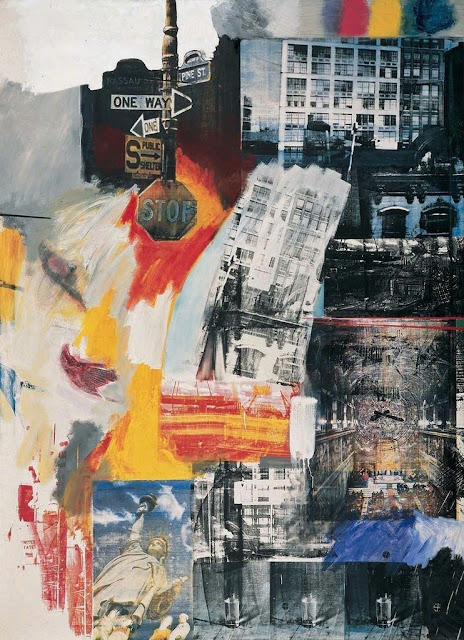The Combine Paintings - Between Art and Life
 |
| Charlene, 1953-1954 |
Rauschenberg's most famous dictum was that he sought to "operate in the gap between art and life." This statement is a bit slippery than it first appears. After all, once these things go in a gallery or museum, aren't they unambiguously art? But it is easy to get the idea. For instance, in Charlene, the objects included in the piece are presented relatively unaltered. Even the paint is unmixed, straight from the can. Rather than making a painting which "represents" a view of the world as a picture, the combines simply let the world in. The objects represent themselves, first and foremost; we may be tempted to interpret them but this can only happen after we recognize what they are.
We can also see the combines as analogues for the hustle and bustle of New York City at the time. Obviously, the way that things look has changed a bit while Rauschenberg's work has become more widely acceptable and influential as art. This makes it harder to see how radical and unusual it might have seemed at the time: a more direct reflection of the street corner outside your window. It is helpful to imagine the combines as analogues for the chaotic jumble of objects, images, advertising, and pedestrian traffic that would have been found on the street at the time. The yellowing newsprint in these works seems laced with nostalgia now but remember, it was brand new back then.


Comments
Post a Comment